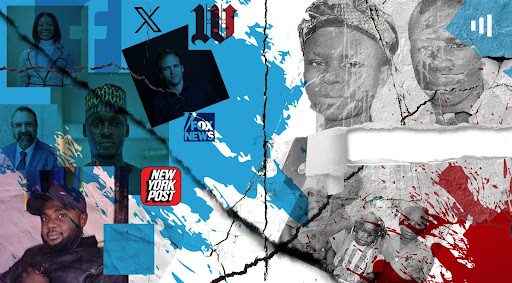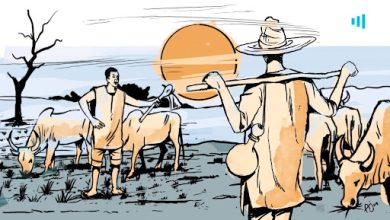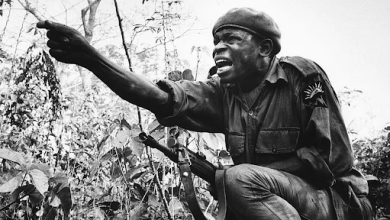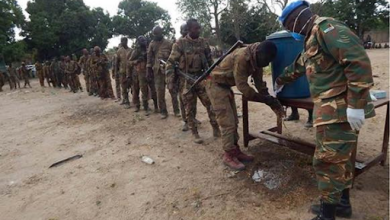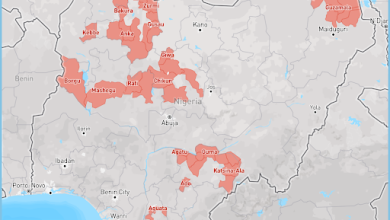Terror From The Trolls (I): The Keyboard Warriors Fueling Plateau’s Ethno-Religious Crisis
Analysing hundreds of posts on X and Facebook, HumAngle established how different people and groups pushed narratives around the massacre to suit their biases and ended up inflaming the deadly crisis.
Yohana Isa freaks out at the mention of Dec. 23, 2023.
Something horrible happened in Kambar Pelli, a village on the shore of the Bokkos area in Plateau State, North Central Nigeria. It was a dark, cosy evening, and the clocks were striking at 9 p.m. Yohana had dozed off deeply into a nightmare outside his mud house. His community was raging in his dream, and everyone was running.
It was barely 48 hours until Christmas; the spirit of the season abounded, and children were turned to bed early so they could prepare for Christmas Eve activities. Yohana exhausted himself prepping his family for the celebration until he dozed off. Agonising wails from one of his neighbours suddenly woke him up.
A family compound was on fire; fatal bullets pierced through doors and windows, bludgeoning lives out of the occupants. The attackers spoke Fulfulde as they barked orders, suggesting they were of Fulani extraction. Yohana said the target was Panmun Isa, a successful local farmer in Bokkos. His entire family of 12 paid for his “sin”. Four neighbours trying to rescue the family also paid with their lives, making the total casualties 16 at the time.
In a matter of minutes, the raiders disappeared into the woods, but the agony they left lingered. The family was hurriedly buried in a shallow grave behind the building that once housed them. Their memories are held to the walls through framed, fading images. But all of them, Panmun, his wife, Namban, and their four children — Makroghop, Tapji, Jiret and Precious — are gone forever. His elder brother, wife, and children — Besan, Gifty, Katbam and Shalom — were also not spared.
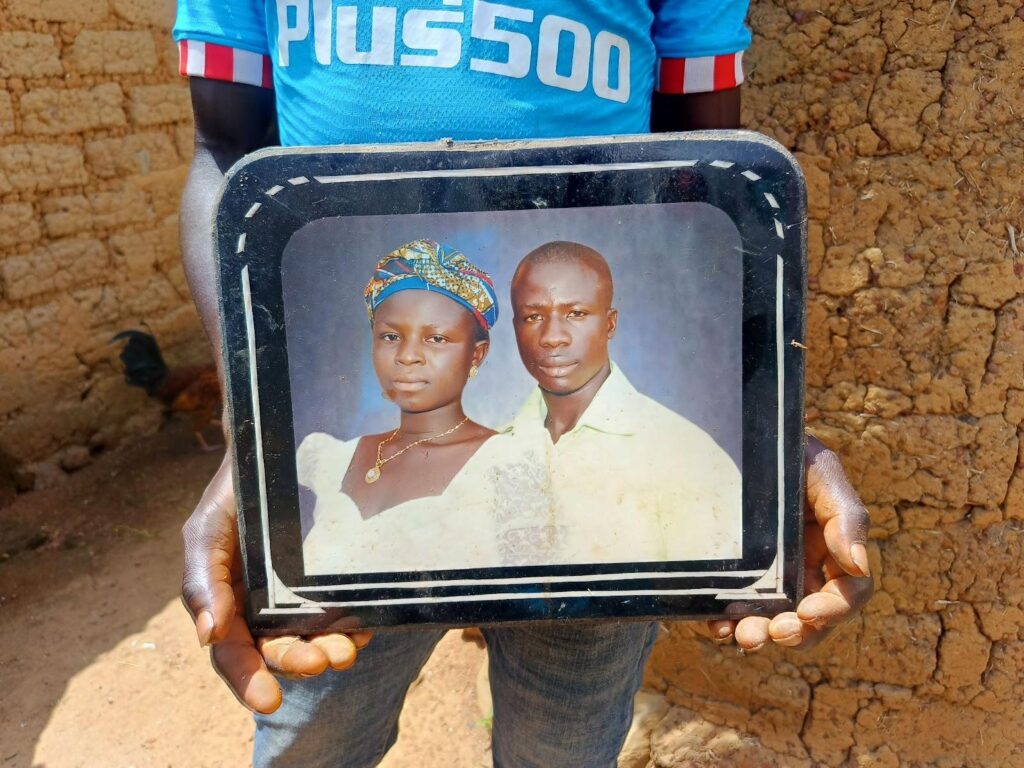
The gory night raid still haunts Yohana in his dreams. As a village chief with strong ties to the target of the attack, he knows where Panmun got it wrong with the assailants. He was feuding with some herders in Bidel, a small village in the neighbouring Mangu axis.
In the Bokkos and Mangu areas of the state, communal clashes are spurred by many circumstances, including feuds over access to grazing lands between the Fulani pastoralists and the natives, who are mostly farmers. In this case, the natives involved are the Mwaghavuls, a local tribe with dominance in Mangu, Barkin Ladi, and parts of the Bokkos local government areas.
“Panmun was farming in a village called Bidel where Fulani settlers have land disputes with the natives,” Yohana narrated to HumAngle. “His farm is one of the disputed expanse of land. When they had issues over there, the Bidel people threatened to sack the Fulani and eventually did, after which violence erupted.”
Panmun had often returned from the farm with his face scrunched up, lamenting bitterly about a land dispute involving him and the Fulanis in Mangu. Yohana and about a dozen residents HumAngle interviewed in Kambar Pelli accused the Fulanis of attacking Panmun’s family “for participating in their displacement from Bidel”.
The villagers also accused the Fulani herders of habitually plotting guerrilla attacks against farmers, who quarrelled with them or dragged them to the police for invading their farms with cattle grazing.
“Because they know him well, they decided to attack his home. That is why they only stopped at his house, killed him and his family and left,” Yohana added.
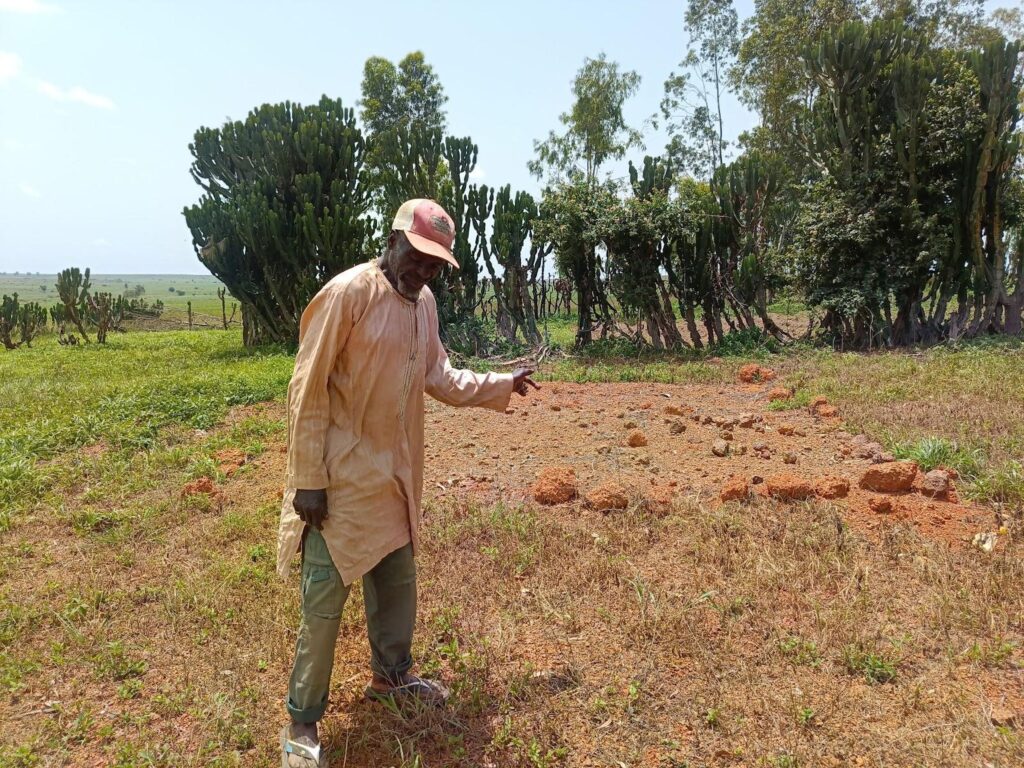
‘Bad news travels faster than bullets’
The news travelled around the towns and villages of Bokkos that “the Fulanis have killed Mwaghavul men again”. The timing of this incident seems enraging, prompting a wave of deadly reprisals.
In Plateau, a volatile state, Christians and Muslims are often at war. An interreligious crisis could happen at the slightest trigger. The causes of the earliest forms of violence in the state are well documented. In one narrative, a Christian lady had tried to cross a mosque’s barricade during Friday prayers. The other narrative is that a Muslim politician was appointed the state’s local coordinator for a Federal Poverty Alleviation Programme. Religion and ethnicity seem to overlap in this state: The Hausa/Fulani are easily identified as Muslims, while the natives are predominantly Christians.
Early morning on Dec. 24, 2023, the violence had escalated into a blood-for-blood duel. Native Mwaghavul people were enraged that their kin were killed a few days before Christmas. They began to attack and displace Fulani settlements. The vengeful killings continued on both sides, spilling beyond the corridors of Bokkos. The crisis would not stop, spiralling into Christmas day with a cocktail of carnage.
Later, the Mwaghavul people colluded with other natives, such as the Ron and the Berom, to fight against the Fulani pastoralists, allegedly causing mayhem across Mangu, Bokkos, and Barkin Ladi. In most cases, the Fulani residents in these areas fought back, also targeting the homes and properties of the natives.
Although there was a brief lull towards the evening on Christmas day, the violence flared up again, thanks to online information manipulators who built up tension with posts appealing to religious sentiments. Social media posts from both sides were used to manipulate emotions, inflaming the crisis and portraying the violence as a jihadist attack against the Christian population.
Analysing hundreds of posts on X (Twitter) and Facebook, HumAngle established how different people, groups and bodies pushed narratives around the massacre to suit their biases and ideologies. Notable amplifiers of disinformation around the Christmas massacres are religious conspiracy theorists, local and international religious organisations, social media influencers, community journalists, and unsuspecting individuals who refused to check the truthfulness of a claim before propagating it.
“While we can’t throw away everything posted on social media, people used these tragic events to promote their ideologies and interests because it is bad news,” said Samuel Amuna, a humanitarian worker documenting the crisis. “As you know, bad news travels faster than bullets, escalating the violence.”
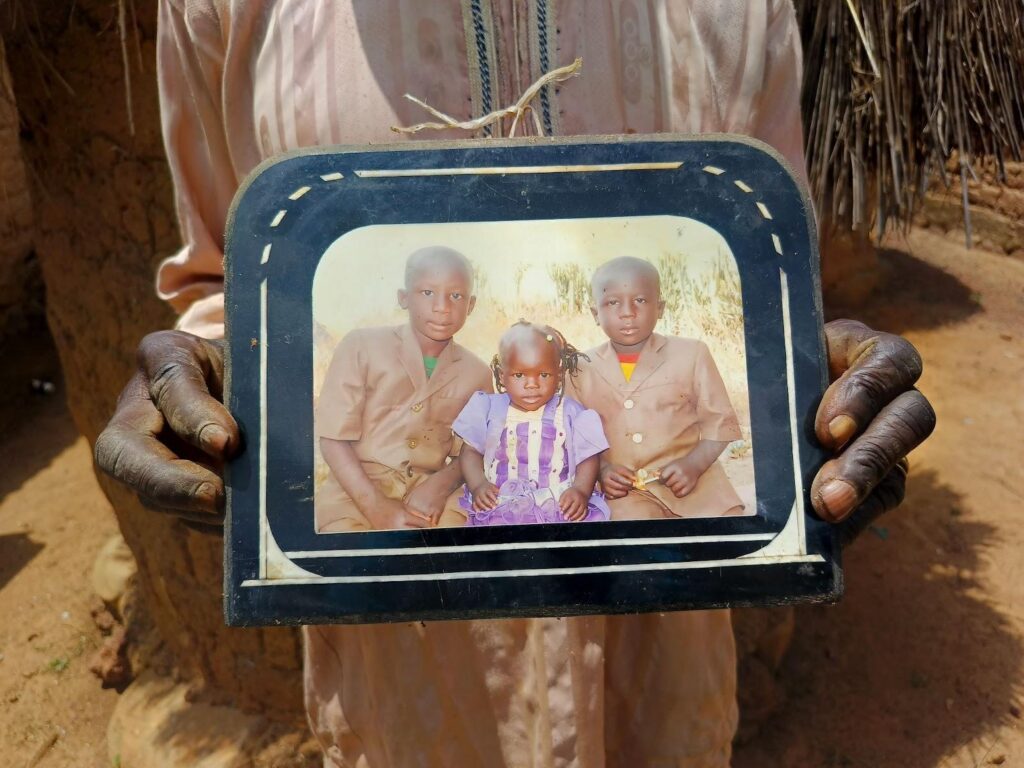
Footage, fire and fear
From Dec. 25, horrifying videos and pictures purportedly emanating from the Plateau killing field circulated on social media. Alarming rhetorics, insinuations and misleading images were used to anchor the narrative that government-backed Islamist fighters were on a mission to wipe out Christians in the state.
One video shows the lifeless bodies of women and children on a field that has splashes of blood. A baby strapped at the back of her dead mother wails bitterly for help. Another dead woman covered with blood and dust lays on her baby, who had also died gruesomely. The 1:37 footage takes one on an emotional journey to the scene of the attack, which many social media influencers claimed was Plateau.
One of the posters, an influencer with over 80,000 followers, claimed Christians were being killed every year in this manner and suggested that children and women were treated worse than animals in Plateau. The video got over 40,000 views and more than 800 reposts on his X page alone.
We used InVID, a video verification tool, to break the clip into keyframes and subject them to Google reverse image searches. The result shows that the video existed on the internet before the killings began in Plateau on Dec. 23.
An X user had posted the same video on Dec. 16, 2023, a week before the massacre occurred in Kambar Pelli, claiming the footage showed Wagner soldiers killing unarmed civilians in Burkina Faso. Although it is unclear if it was recorded in the country as claimed, the clip seems to have a reputation for manipulating narratives in conflict zones because it tends to stir up emotions — as seen here and here.
While a massacre truly happened in many communities in the north-central state, the most provocative images trending at the time were old and had nothing to do with the violence that struck. Some of the photos were recycled to frame the incident as a jihadist war against unarmed Christians.
One post shared between Dec. 25 and 27 by influencers with thousands of followers used a Boko Haram attack video to portray that jihadi fighters shouted “Allahu Akbar” (praise God) after razing down Christian communities in the remote areas of Plateau, courtesy of a successful Christmas massacre. Other old incendiary photos – such as this — were reshared multiple times with firebug innuendoes suggesting the destruction of churches and killings of Christian worshipers.
Some videos of people hospitalised, displaced, or dying — as seen here and here — were published with accurate narratives of what transpired in the rural communities of Bokkos and Mangu. However, they were not as widely accepted as the misleading ones.
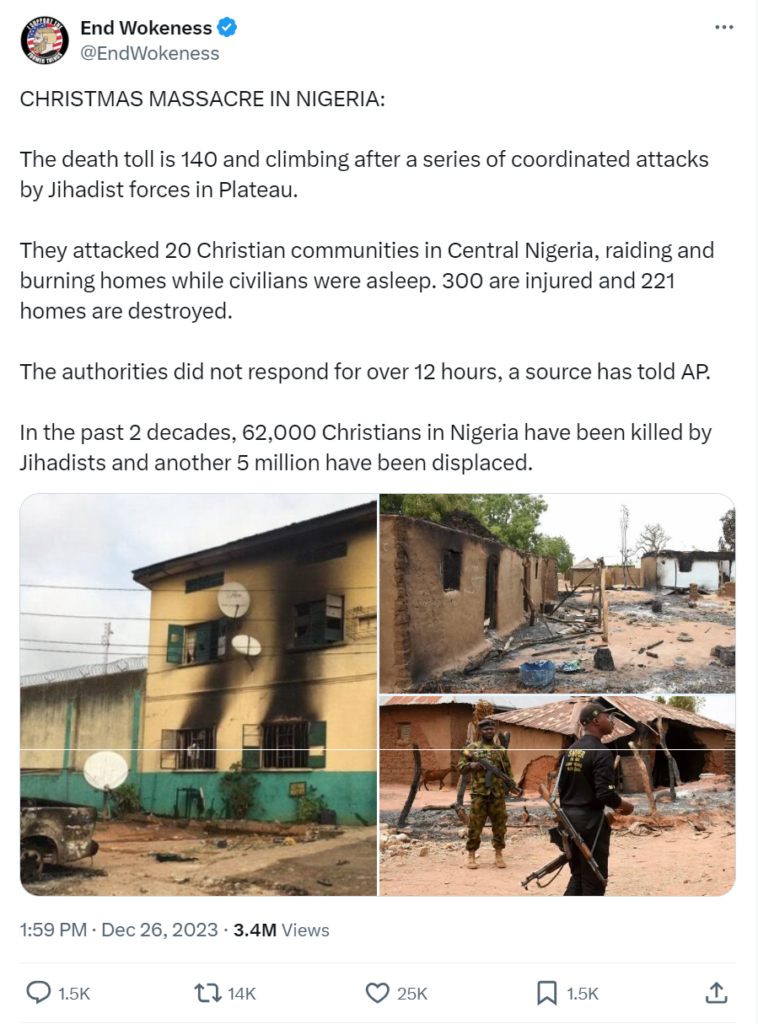
Behold the fox of hoaxes
Amid the wildfire of disinformation campaigns and hate speeches, a wave of media framing by foreign influence operators set in, overwhelming the space with enraging narratives. On Dec. 30, a troubling story spread a fresh trove of fear on social media with this damning headline: World looks other way as Christians ‘killed for sport by jihadists‘ in Nigeria. Fox News, an American-based channel which published the story, seemed to have fed the thirst for validation for claims that foreign-linked jihadists were at play in Plateau during the Christmas attack.
Thousands of X and Facebook users fell for the clickbait accompanied by a recorded television programme version of the story claiming that a Christian is killed at least every two hours in Nigeria. Blemishing facts with forged anecdotes, the story re-echoed the theory that Nigeria is the deadliest country to be a Christian in the world, as promulgated in a report by the International Christian Concern. The journalist would later author another inciting report in April this year about Christians facing a deadly crisis in Africa, stressing that “nine out of 10 Christians killed for their faith in 2023 were in Nigeria”.
Paul Tilsley, the Fox News South African-based reporter who authored the story, failed to quote any primary, authoritative source to capture what had happened accurately. Instead, he quoted two American critics with strong affiliations with international Christian organisations, including Johnnie Moore, the president of the Congress of Christian Leaders and co-author of The Next Jihad.
“Not a day goes by when Christians are not terrorised in western Africa in the most grotesque ways imaginable,” Moore claimed. “Christians are killed for sport, especially Christian children. For every massacre which you hear about, there are probably ten others which happened in the shadows. The death tolls are routinely in the hundreds.”
The story had over 1.7 million views, thousands of comments and reposts on X, and more than 6,000 interactions on Facebook. When HumAngle checked the Fox News report’s backlink profile, we found that hundreds of websites had either republished the story with a different headline or copied it word for word, amplifying the seeming information manipulation.
With millions of social media followers and a sizable audience, many other US-based media, such as the New York Post and the Washington Times, amplified the conspiracy theory with no evidence to back their claims. Nigerian news platforms and internet forums with large audiences — such as Nairaland and Sahara Reporters — also republished the article for millions of followers without independent verification.
Fox News curiously relied upon questionable data about the killing of Christians in Nigeria to drive its narrative about the massacre that happened. Intersociety, a Catholic-inspired think tank based in southeastern Nigeria, claimed that more than 52,000 Christians “have been butchered or hacked to death for being Christians” since 2009 in Nigeria. Its report also claimed that “18,000 churches and 2,200 Christian schools” were attacked in 14 years.
The author of these reports, Emeka Umeagbalasi, a criminologist and researcher, released a similar report some years back, claiming that from 2009 to 2020, 32,000 Christian lives had been lost: 15,000 deaths caused by herders and 16,800 by Boko Haram and ISWAP. HumAngle had, however, found the report inaccurate and inconsistent with more reliable datasets.
Similar flaws can be been found in the fresh report released amid the fury over the killings in Plateau, which alarmingly claimed: “Jihadist genocide of Christians bloodiest in 2023”. The report failed to provide empirical evidence to back all its claims. HumAngle reviewed all the 40 news stories cited in the report as references to check how they arrived at their result. We observed a consistent misreporting of stories around the farmer-herder clashes and violent attacks by rural terrorists — otherwise known as bandits.
Most of the news articles cited are reported by Christian media organisations that quoted Morning Star, a platform that concerns itself with reporting the persecution of Christians globally, twisting many violent attacks as “genocidal killings” of Christians. The report also referenced wildly unrelated news stories, including one about the abduction of a local Yoruba monarch in Kogi, North Central Nigeria, and the case of a college student who committed suicide.

Enters the Islamophobic activist
In the cycle of information manipulators around the subject matter is Robert Spencer, an American blogger who prides himself as a critic of Islamic ideologies and an “Islamophobic” author. During the heat of the crisis, Robert championed a series of manipulated articles using JihadWatch, a website dedicated to minting content on jihad, Muslims and terrorism. The website repeatedly misreported stories around the Plateau carnage, with bloated headlines and distorted narratives.
In one article Robert shared on his X page (where he has over 200,000 followers), Daniel Greenfield, who writes for JihadWatch, claimed: “Muslims celebrated Christmas in Nigeria by massacring around 100 Christians across a dozen communities”. He also claimed that “jihadis hacked Christians to death with machetes and burned down churches as part of a genocidal campaign that has killed 52,000 Christians in over a decade”. The article was reposted by thousands of people.
Robert has either authored or shared dozens of misleading stories on the Christmas carnage, spurring social media outrage.
Another article he shared on his page charged the United States government to include Nigeria as a country of “peculiar concerns”, a term used to describe countries with no regard for religious freedom.
Before the December incident, Robert had promoted similar narratives about other violent conflicts in Nigeria. For instance, a few weeks after former President Muhammadu Buhari left power in 2023, he published a misleading story claiming Muslims slaughtered “700 Christians as farewell gifts to outgoing president”.
His twisted narrative went viral on X with thousands of likes and reposts.
The agitators and the alarmists
People with apparent ethnic and regional interests also flamed up the disinformation surge. Some social media influencers advocating for the emancipation of the Middle Belt from northern Nigeria had causes to take advantage of the dire situation. HumAngle reviewed hundreds of posts from groups and individuals affiliated with the Middle Belt around the time the incident happened. What we found showed that people from states like Plateau, Benue, Taraba, Niger and parts of Kaduna — who are predominantly farmers — have been at war with Fulani pastoralists over access to grazing fields.
The Middle Belt internet campaigners seem to have a slightly different narrative; their theory is that northern Fulani herders — whom they often describe as terrorists — are hellbent on taking over their territories and subjugating them. One of the Middle Belt influencers quoted a post by Amnesty International, a global humanitarian and human rights think tank, attempting to debunk the details it provided about the attacks in Plateau.
“Stop trying to sugarcoat the ethnic cleansing in Plateau State. It’s a terrorist attack by Fulani jihadists,” the poster said. “We know our killers and we know what they are. If you do not call them who they are, you might as well not tweet about it.”
Similar posts we reviewed on X and Facebook re-echoed this theory, with many suggesting that the Nigerian government is backing the Fulani terrorists to wipe out the people in the Middle Belt region. HumAngle recently debunked the use of old pictures and videos to sensationalise the true accounts of what happened in Plateau by some Middle Belt campaigners.
We also noted that some social media influencers were pushing misleading narratives in defence of Muslims and the northern region. Many of them raised false alarms and made hate speeches. By January this year, some of the accounts had begun another round of disinformation spree, claiming that “Christian terrorists” were killing Muslims in the Mangu area of the state. Before then, some Middle Belt influencers — such as this poster — had accused the Hausa/Fulani of suspicious silence “over the massacre going on in Plateau state”, suggesting that this “is another testament to the fact that the Middle Belt is on its own”.
“The hypocritical northern elites are silent and probably celebrating the massacre right now,” the viral post read.
They also manipulated some news content to portray an attack on the Muslim population. One such influencer claimed: “Muslims in Mangu town, Plateau, are currently experiencing a genocide, with Christians setting fire to their homes and properties”.
More of revenge than religion
HumAngle looked into one claim of a religiously motivated murder and found that the reality was different.
“Breaking news!” one X influencer had announced in January. “The Chief Imam of Jumma’at Mosque, along with an Okada Rider and others, was killed in a village in Plateau state. The tragic incident unfolded in Ndun village, part of Bokkos local government [area]. This unfortunate event is a direct consequence of fake news. Unless there are consequences, such as legal actions, for those spreading misinformation, this disturbing trend is likely to persist.”
A visit to Ndun, however, revealed a different picture. On Jan. 2, some assailants, suspected to be a combination of the Ron and Mwaghavul warriors, raided the Fulani settlements in the village, according to farmers, local chiefs, and police officers.
Upon hearing about the attack in Kambar Pelli, the Fulani residents vacated the Ndun area, “knowing that the natives will come for us,” locals said. When the natives came, they burnt houses, cattle and food stores belonging to the Fulanis in the village. Believing that the assailants had left their settlement after razing it down for hours, Sani Idris, the chief Imam of the Ndun village (a Fulani man), went back to his burnt home to see if he could get some undamaged maize.
Unfortunately, he fell into the hands of the assailants, avenging the killings of their kin in Kambar Pelli. Many among the Fulani people we interviewed claimed Sani died recklessly. “Why would he have left for his home at midnight when he knew what was happening in the village?” one of them asked.
Mu’azu Abdullahi, the deceased’s relative, does not believe Idris was killed because of his religion. He was rather killed because he was Fulani, he stressed. After forcing life out of him, the attackers allegedly “removed his two eyes, tongue and penis”, those who buried the man in a cemetery in the village told HumAngle. When his family rang his phone to ask why he had not returned home, the Imam’s killers “told us to come and carry our brother’s corpse”.
“I know one of the killers,” said Mu’azu Muhammad, another Fulani man we found still dwelling in the deserted Ndun village. “I can identify the person who picked the call by his voice. He’s from Berom, but he lives with the Fulani people and was trained by them very well. He can even speak the Fulfude Language.”
But the truth didn’t matter: Many northern influencers continued to spread the misinformation that “Christian terrorists” were killing unarmed Muslims at the time, using Sani’s gory murder as an anecdote. HumAngle interviewed dozens of people in ten affected communities we visited across Mangu and Bokkos. Many believe that the killing spree was mostly spurred by the urge to take revenge, leading to a tit-for-tat violence that later had a religious undertone.
On social media, however, especially on WhatsApp, we have seen a pattern of forged broadcast messages circulated to stir up religious violence. One such viral broadcast message claimed to have come from “the Fulani jihadists”, vowing to cause more violence until Nigeria becomes an Islamic state.
A similar suspicious post was found on X, with a user claiming to have exposed how Christians were planning to “keep on murdering Muslims; they organise their people from different places just to commit massacre on the Muslims”.
“Something needs to be done about saving the lives of Muslims in Mangu town of Plateau State before the Muslims retaliate. It’s been over 3 days now and Operation Rainbow [a Plateau state-based joint security outfit] is aiding the Christians in Murdering the Muslims,” the user said in a post that has now been viewed over 42,000 times.
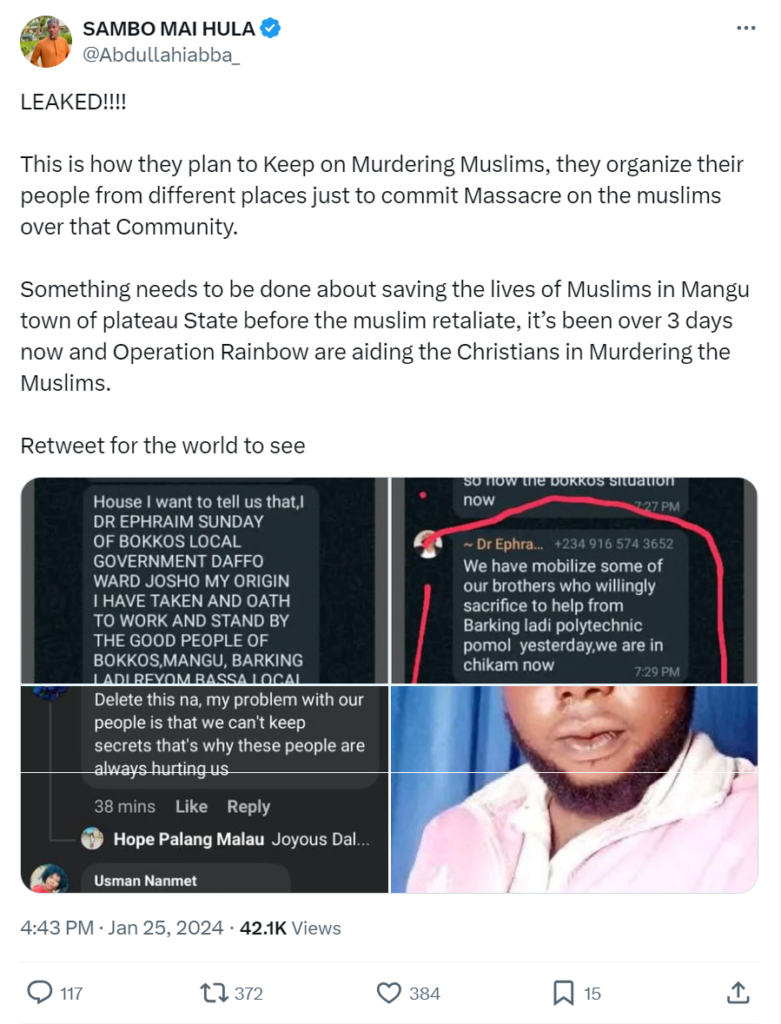
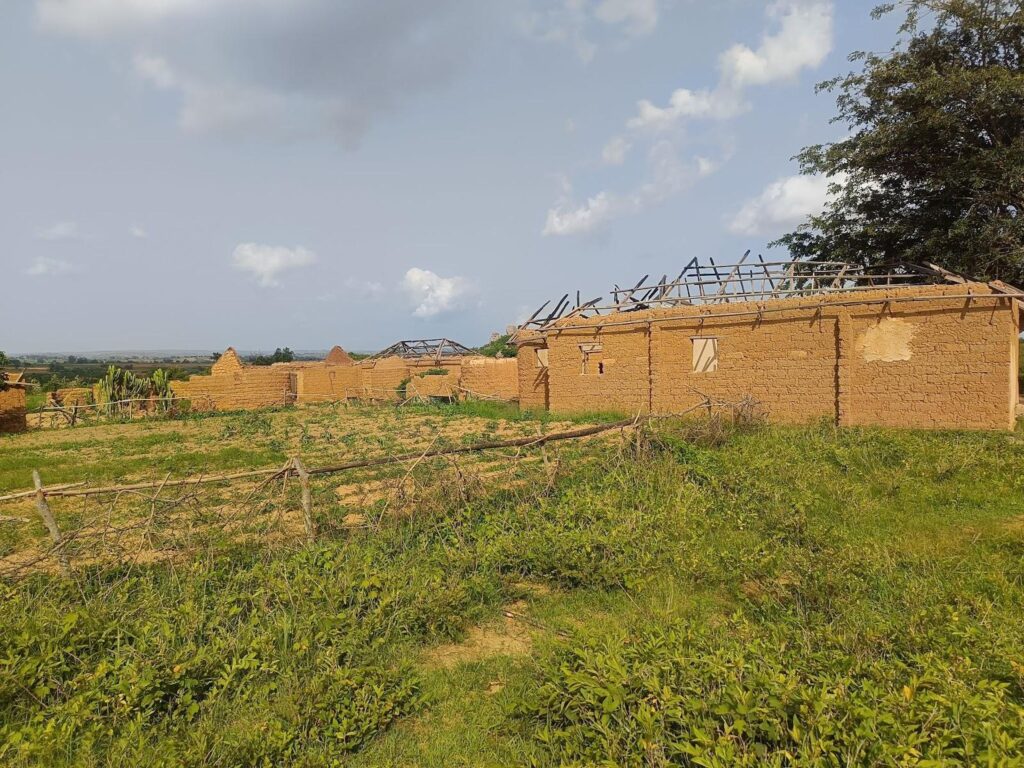
The pattern of escalating violence with disinformation didn’t start today. In the early days of the Plateau crisis, before social media, rumours were backed with mischievous leaflets propagating unverified information about two warring parties. In one instance, during the 2001 ethno-religious riots, some leaflets were circulated in the name of Hausa-Fulani Youths, according to a report by Human Rights Watch.
Using threatening words directed at Christians, the leaflets sent strong, hateful messages such as: “Yes, the loss of a few families wouldn’t bother us. After all, for every single Anaguta’s [indigene] life and their allies; there are thousands of other Hausa-Fulanis. Let’s see who blinks first.”
In another instance, some leaflets said: “Death is the best friend of Hamas. Be rest assured that we will do it even better… blood for blood. We are ready!”
Meanwhile, a man sharing some of these leaflets was said to have confessed to being a Christian when authorities arrested him. Some Hausa groups also alleged that a compilation of documents attributed to them was forged. “Many people confirmed to Human Rights Watch that these exchanges heightened an already tense atmosphere in Jos and accentuated existing fears and suspicions,” the HRW stated.
Yohana hissed and sighed when HumAngle told him the length of damage, destruction, and online information manipulation the murder of his kinsmen had caused. He hates to be reminded about the “midnight murderers who couldn’t come during the day so that we can face them”.
Asked if he believes it was an Islamist attack against the Christians, he said he was not aware of that but wondered why the killers came on Christmas Eve. He suddenly stopped speaking. Sobbing, he pointed to the mass grave of those murdered on Dec. 23.
“It is what it is,” he sighed again.
Support Our Journalism
There are millions of ordinary people affected by conflict in Africa whose stories are missing in the mainstream media. HumAngle is determined to tell those challenging and under-reported stories, hoping that the people impacted by these conflicts will find the safety and security they deserve.
To ensure that we continue to provide public service coverage, we have a small favour to ask you. We want you to be part of our journalistic endeavour by contributing a token to us.
Your donation will further promote a robust, free, and independent media.
Donate HereStay Closer To The Stories That Matter

